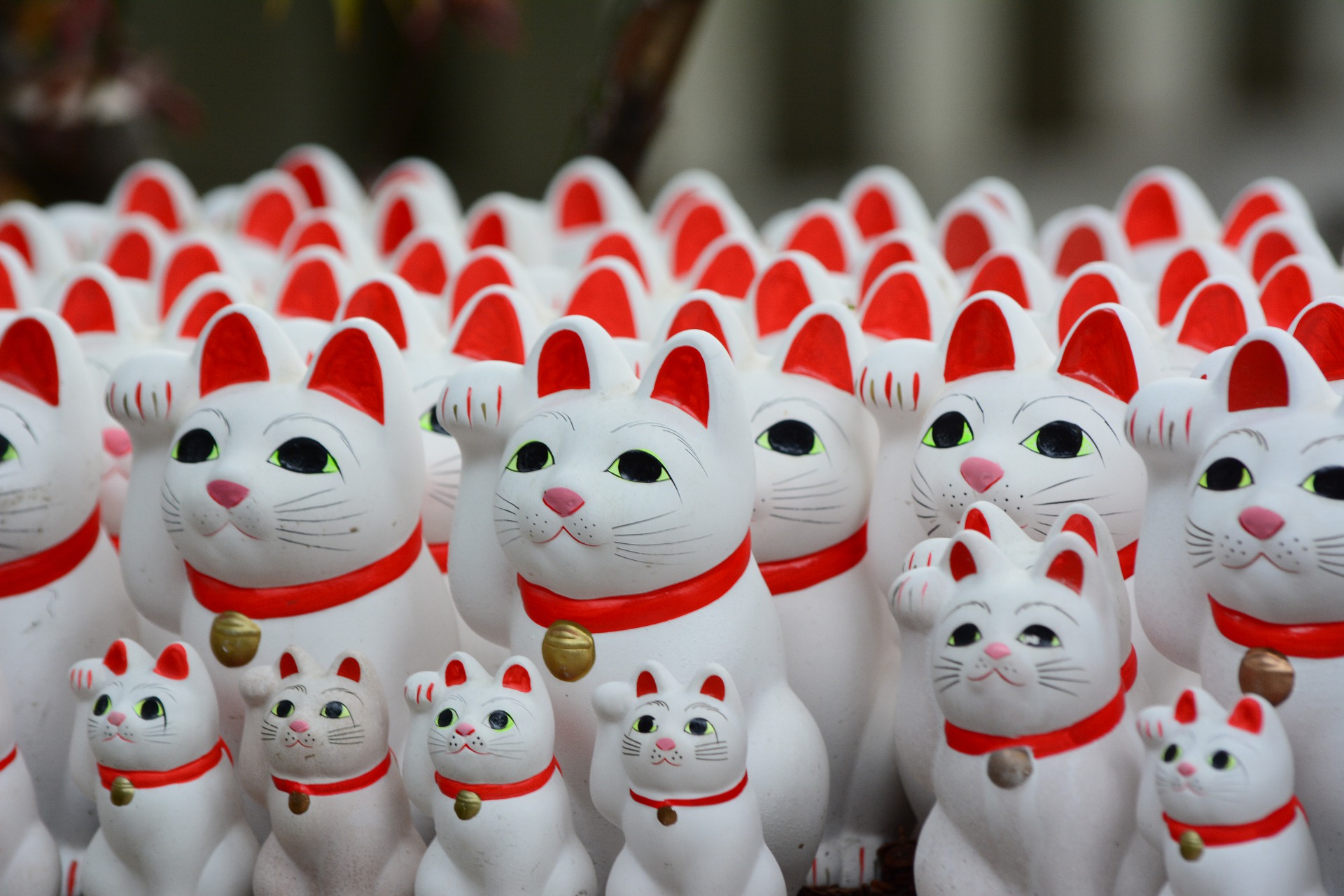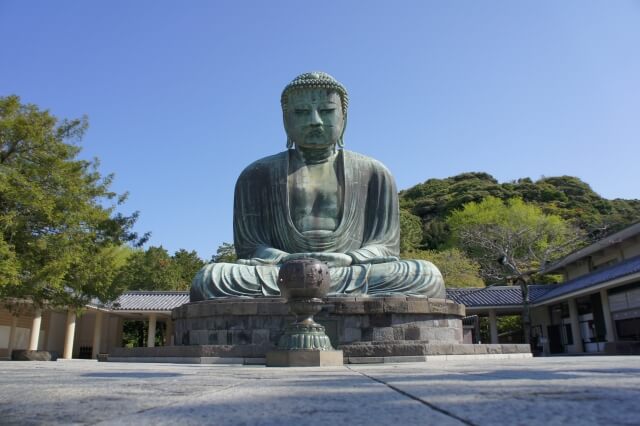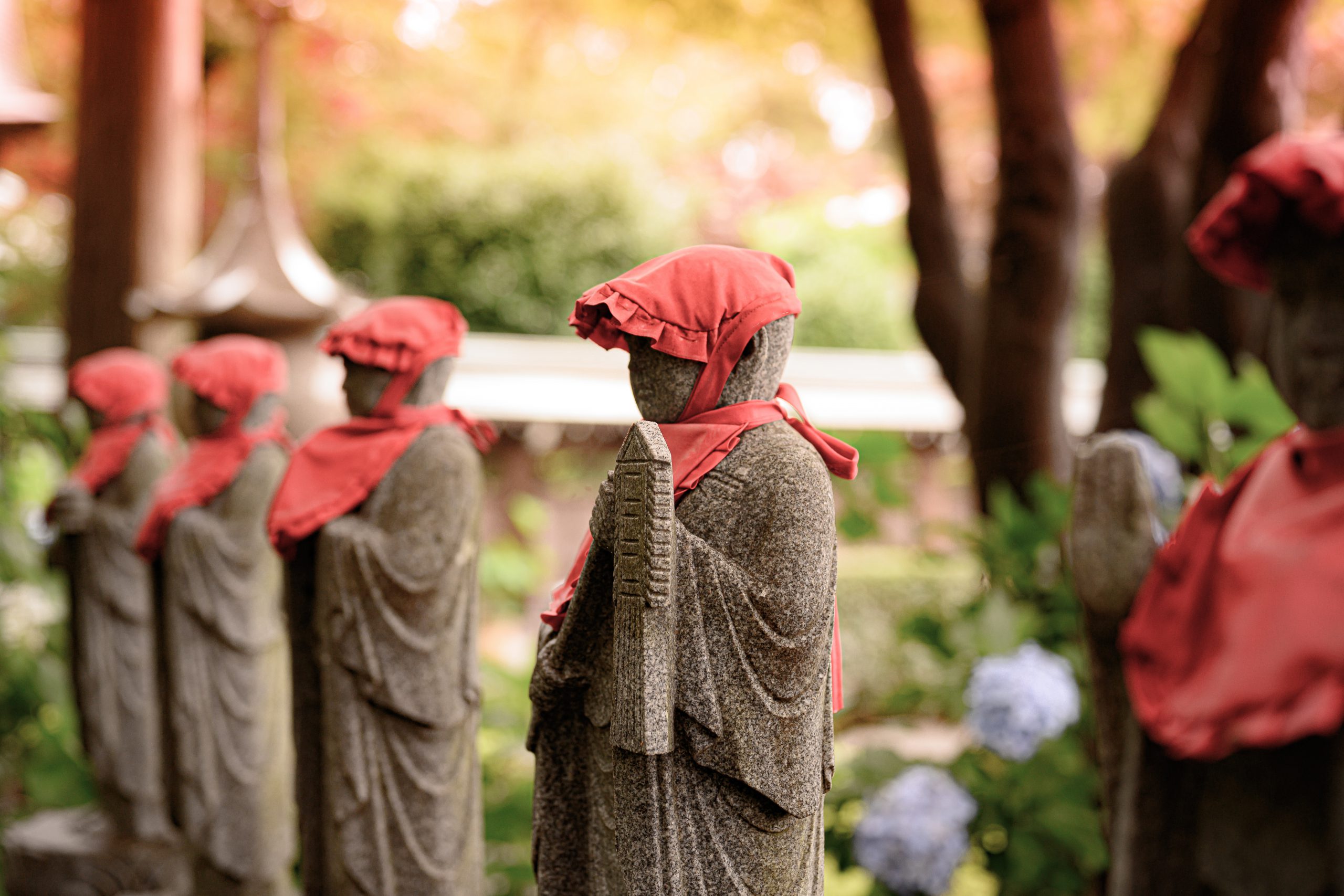Temples and shrines in Japan can be unique in many ways. Some of them are famous for having many animals in the precincts such as Itsukushima Shrine on Miyajima, many special features like the thousands of torii gates of Fushimi Inari Shrine in Kyoto, or other special characteristics. We have compiled a list of shrines and temples throughout Japan that are worth a visit for their large collection of statues or artifacts. In this article, we will introduce some temples and shrines in Japan with a lot of statues, most of them are animal statues or other traditional religious statues.
Maneki-neko at Gotokuji Temple, Tokyo
Located in Tokyo’s Setagaya district, Gotokuji is a Buddhist temple famous as the birthplace of the maneki-neko, or lucky cats. On the temple grounds, there are thousands of maneki-neko figures, and this number is constantly increasing as visitors put new maneki-neko figures every day.
The temple legend states that somewhere in the early 17th century, Ii Naotaka (a feudal lord in the Edo Period) was saved from a heavy thunderstorm by a cat who invited him into this temple. To show his gratitude to the cat, Ii Naotaka decided to dedicate the temple to the Ii clan, and maneki-neko has been enshrined here as they are believed to bring luck.
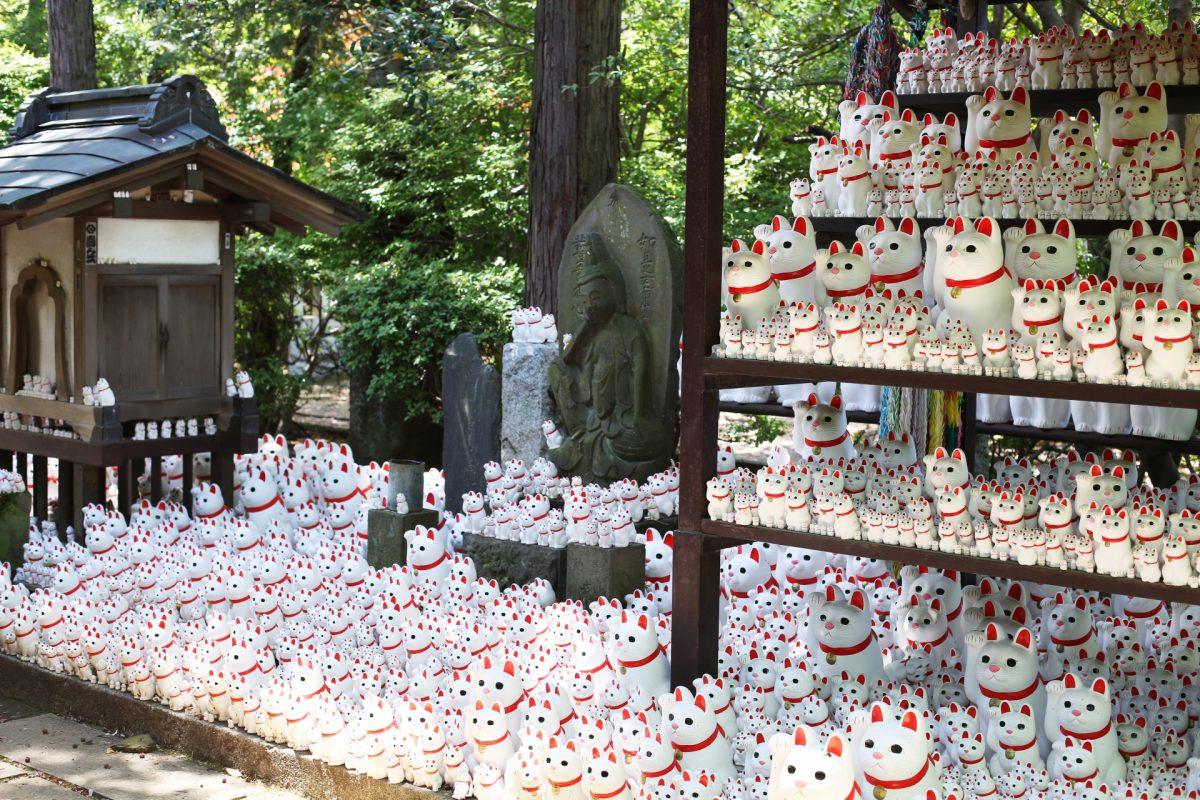
There are two different kinds of maneki-neko, raising either their right or left paws. It is said that the right paw welcomes money and the left welcomes people. Gotokuji Temple specializes in the right-pawed version of the maneki-neko, meaning they grant wishes regarding wealth and prosperity.
How to get to Gotokuji Temple
5 minute walk from Gotokuji Station
Foxes at Toyokawa Inari Tokyo Betsuin Temple, Tokyo
Toyokawa Inari Tokyo Betsuin Temple, in the middle of Tokyo, was originally built in 1828 and is a branch temple of the main Toyokawa Inari Temple located in Toyokawa, Aichi Prefecture. Here, you will be welcomed by a large number of fox statues, mostly in stone, of different shapes, sizes, postures, and facial expressions.
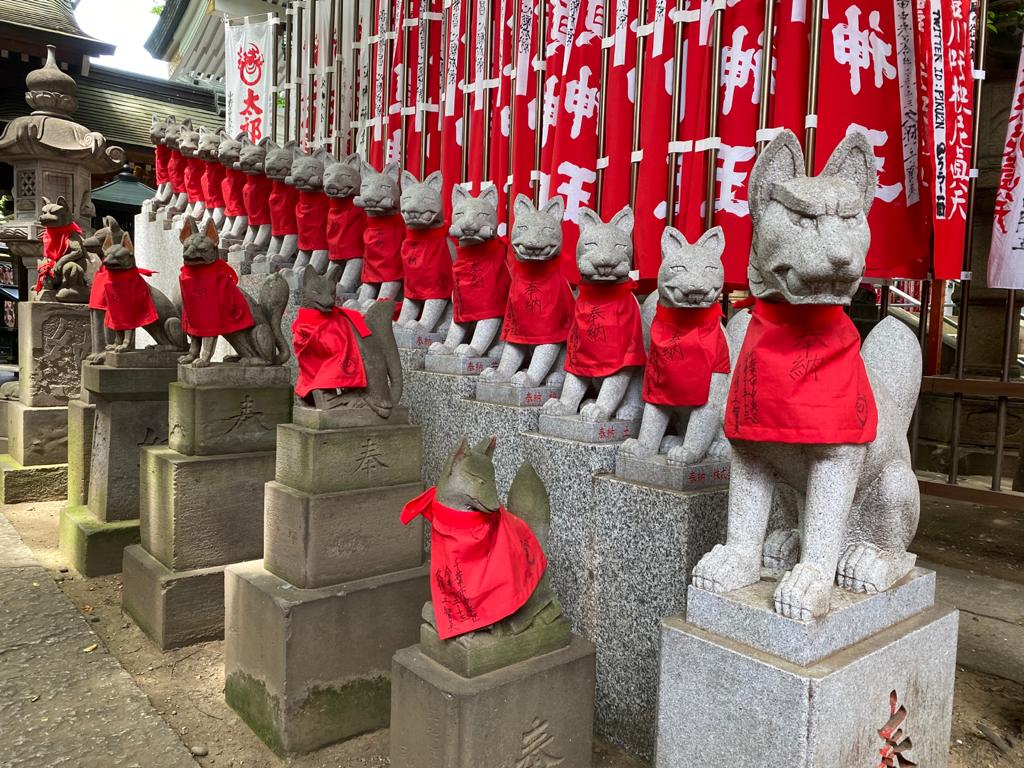
At all Inari shrines and temples in Japan, you can find statues of foxes, though there are usually just a few of them. Foxes are considered the messengers and servants of Inari, who is the god of rice and agriculture. Today, the temple is popular among people who wish to succeed in the entertainment industry.
On the temple grounds, you can find several structures; the main building is a complete mix of the Buddhist and the Shinto. Although the object of veneration represents Shinto traditions, the atmosphere and decoration are completely Buddhist. Benzaiten, which is the god of art and entertainment and one of Japanese 7 Lucky Gods, is enshrined in the building next to the main building. The other members of 7 Lucky Gods can be found behind the numerous red flags in the temple ground.
How to get to Toyokawa Inari Tokyo Betsuin
5 minute walk from Akasaka Mitsuke Station Exit B
Rabbits at Okazaki Shrine, Kyoto
In Kyoto, just a few blocks east of Heian Shrine, you will find Okazaki Shrine where rabbit statues are seen throughout the shrine ground. This relatively small shrine was founded more than 1,200 years ago to protect the city from evil.
In this shrine, rabbits are considered servants and messengers of the enshrined god. Because rabbits are known for having a lot of babies, Okazaki Shrine is closely associated with conception and childbirth. For this reason, it has become a popular spot for couples wanting children and expectant mothers.
A large black rabbit called Kasuzuke Usagi, which can be translated as “fertility bunny”, can be found in the shrine ground. Pouring water over its head and rubbing its belly is said to ensure easy childbirth.
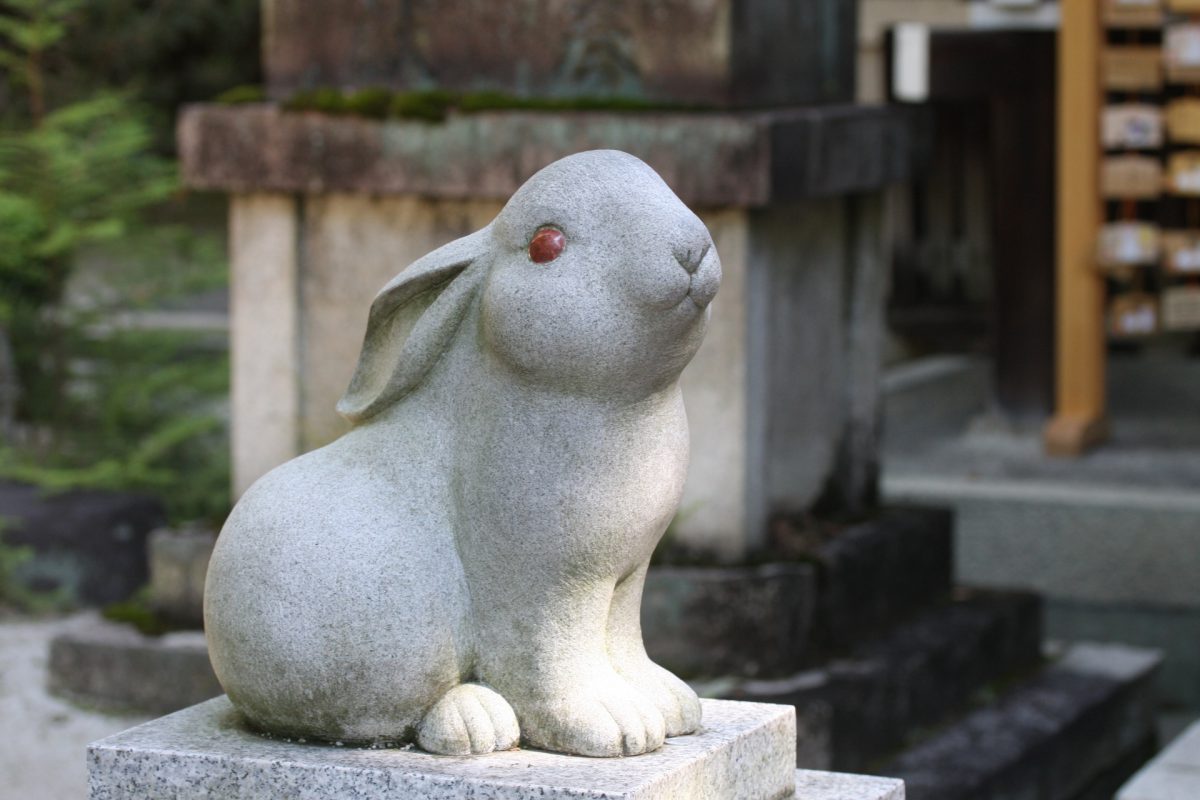
How to get to Okazaki Shrine
From Kyoto station, use the East Underground Exit to the subway station. Take the Karasuma Line and get off at Marutamachi Station. Take bus number 204 from the bus stop in front of the exit and get off at the Okazaki Jinja Mae stop.
Frogs at Nyoirinji Temple, Ogori
Nestled in a peaceful countryside town in the Fukuoka Prefecture, Nyoirinji Temple is famous for over 5,000 statues of frogs. The temple is also known as “Kaeru-dera”, literally meaning “frog temple”. The temple was founded in 729 and houses a standing Nyoirin Kannon statue, which was designated as an important cultural property.
The collection of frog figures started only 25 years ago when a chief priest returned from China. The word “kaeru” means both “frog” and “return” in Japanese, and he brought back a small Jade frog figurine. Since then, he began to collect statues of frogs to make Nyoirinji a fun place to attract visitors.
The temple is also popular for beautiful flowers and sceneries such as azalea and cherry blossoms in spring, hydrangea and wind chimes in summer, and autumn leaves.
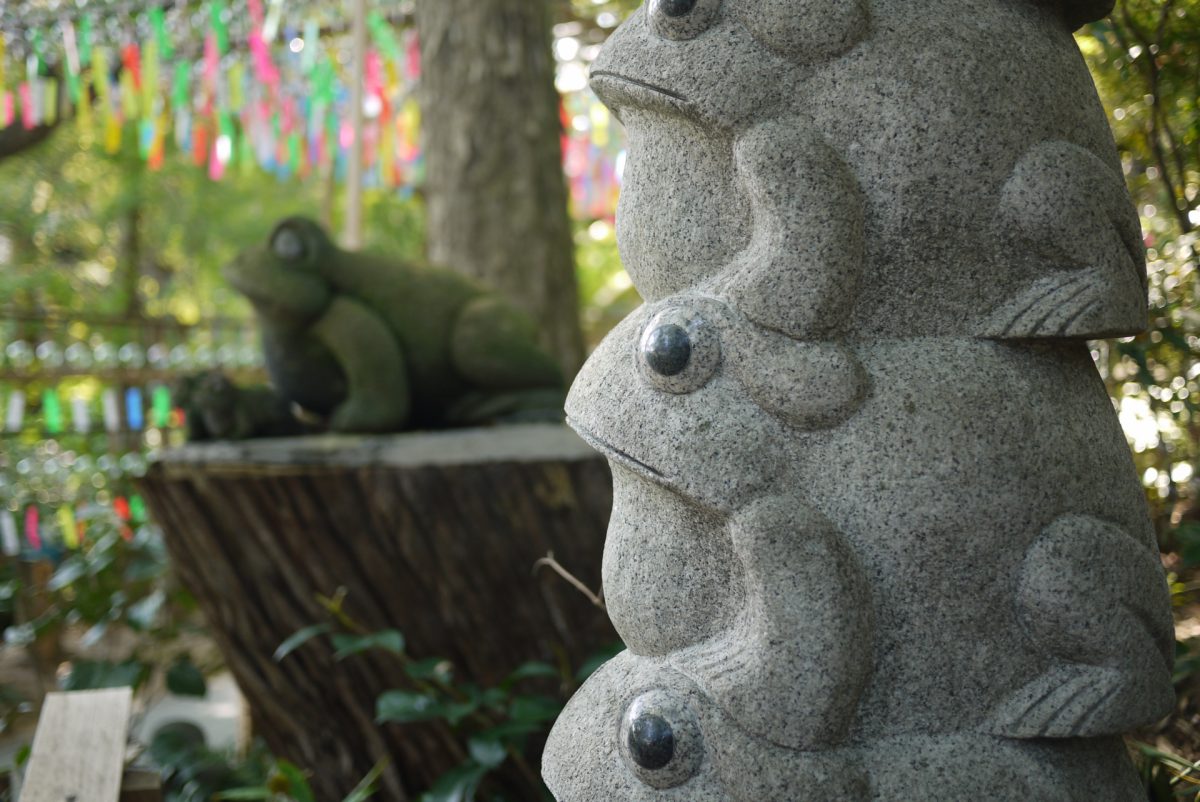
How to get to Nyoirinji Temple
Walk 15 minute from Mitsusawa Station
Monkeys at Yasaka Koshindo, Kyoto
Yasaka Koshindo (officially named as Daikoku-san Kongo-ji Koshin-do) is a small temple located in the Higashiyama area in Kyoto. It is probably the most colorful temple in the city. The temple is dedicated to Shomen Kongo, a guardian warrior, who is said to help people who strive to be good and to punish those who are bad.
People who visit here write their wishes on colorful fabric balls called “kukurizaru” and hang them at the site. Kukurizaru represents the good faith monkey with feet and hands bound. The temple also houses wooden carvings of the “hear no evil, see no evil, speak no evil” monkeys. Japanese folk beliefs regard monkeys as kind spirits that protect people and their homes against evil spirits.
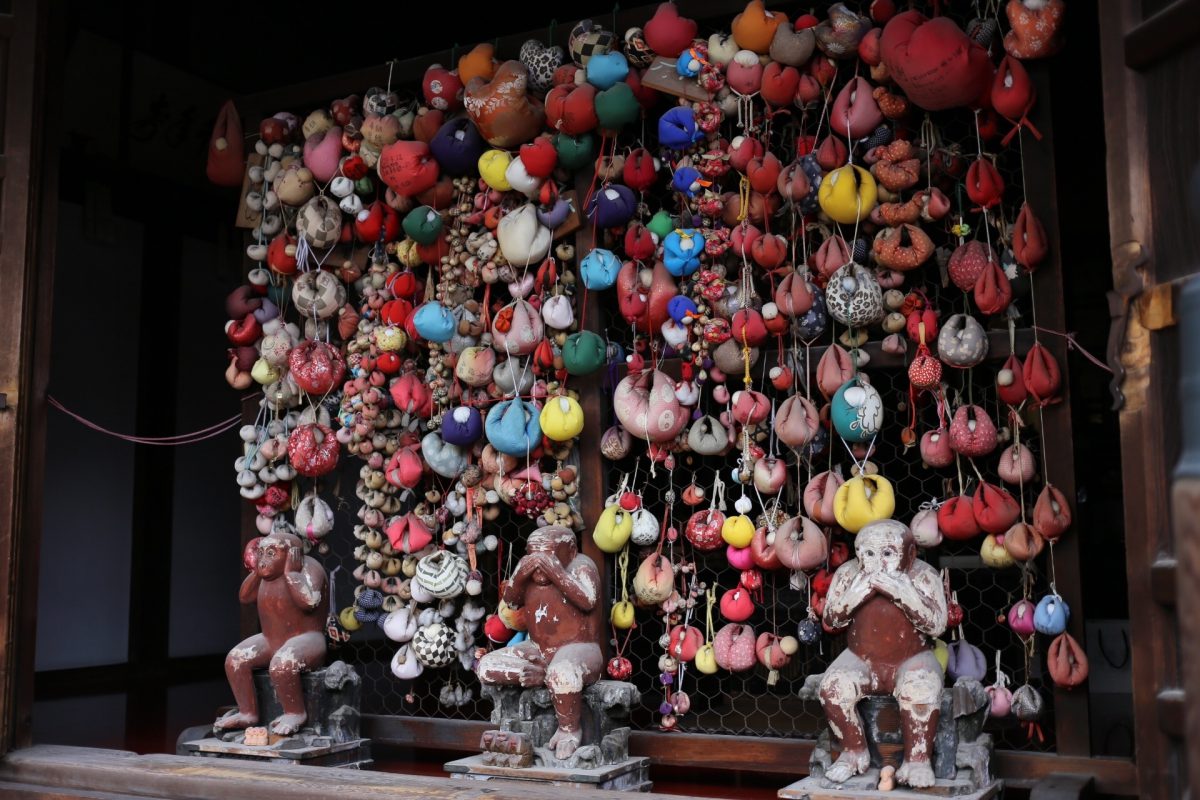
How to get to Yasaka Koshindo
Take a bus #206 from Kyoto station, get off at Kiyomizu-michi Stop, then walk 7 minutes.
Daruma at Katsuoji Temple, Mino
Located in Mino city in the Osaka Prefecture, Katsuoji is known for countless daruma dolls placed in the temple ground. The temple was founded in 727 and is also called the “Winning Daruma Doll Temple” or “Victory Temple”.
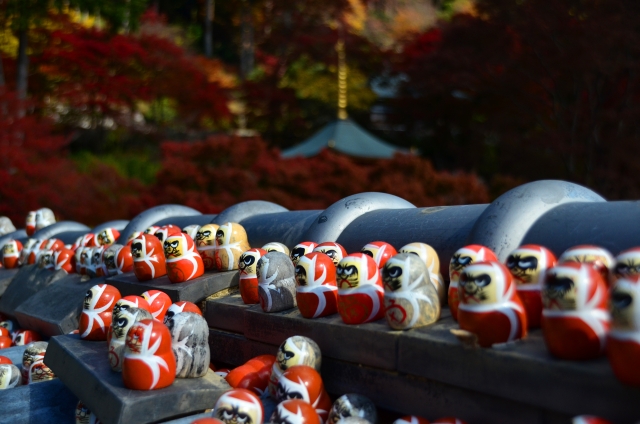
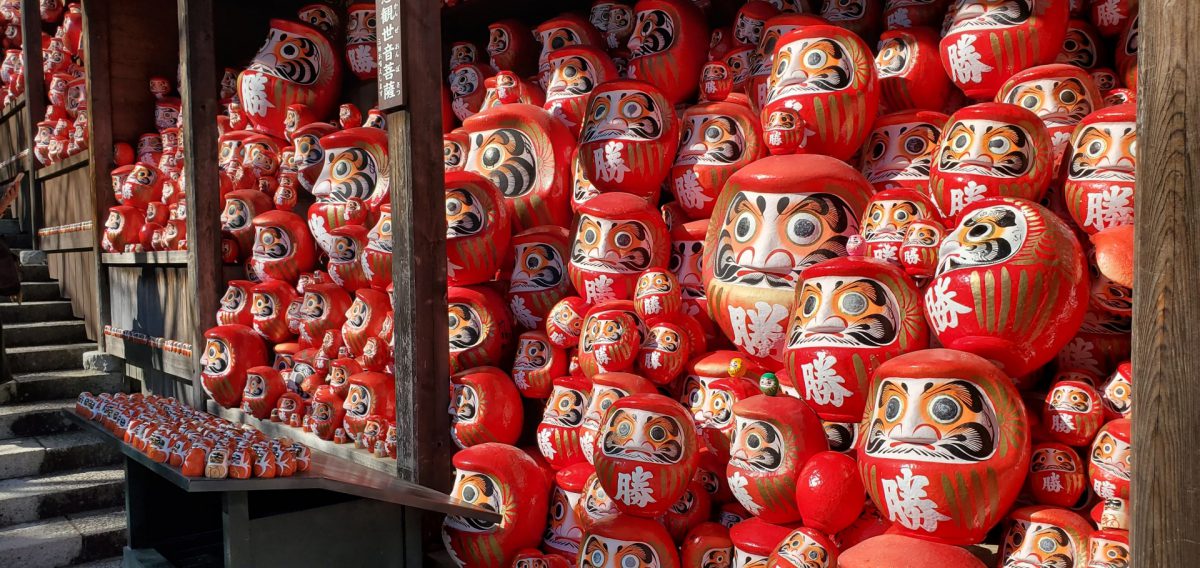
In Japan, the daruma represents the founder of Zen Buddhism who sat in meditation for so long that his arms and legs fell off. The daruma symbolizes perseverance and serves as a reminder to set goals in one’s life. The ones at Katsuoji are called “kachi daruma” (winning daruma).
When purchased, the eyes of the daruma are still white. Write your goal on the bottom of the doll and paint in the doll’s right eye. At home, display the doll somewhere prominent where it will motivate you. Once your goal has been achieved, paint in the left eye and return the daruma to the temple, usually this is done at the end of the year.
Today many people come to the temple to wish for school success, passing examinations, fulfillment in love, victory in sports games, and so on.
How to get to Katsuoji Temple
A 30 minute bus ride from Kita Senri Station on the Hankyu Line
Shika deer at Nara Park, Nara
Despite being living animals, we also included Nara in this list. Nara is the city known for many historical temples, the Daibutsu (Great Buddha), and free-roaming deer. The deer can be found everywhere in the large Nara Park which was established in 1880.
Deer are considered to be the sacred animal, symbolic to the city and they are even designated as a natural treasure. It is estimated that there are more than 1,200 deer in Nara Park, and feeding the deer is an experience in itself. You can purchase special crackers (Shika-senbei) to feed to the deer, the crackers are sold all around the park.
The deer in Nara Park are so used to the presence of humans, and some of them have even learned to bow to you, especially if you bow your head to them first. However, they are a bit cheeky and sometimes even aggressive, so make sure not to provoke them with food.
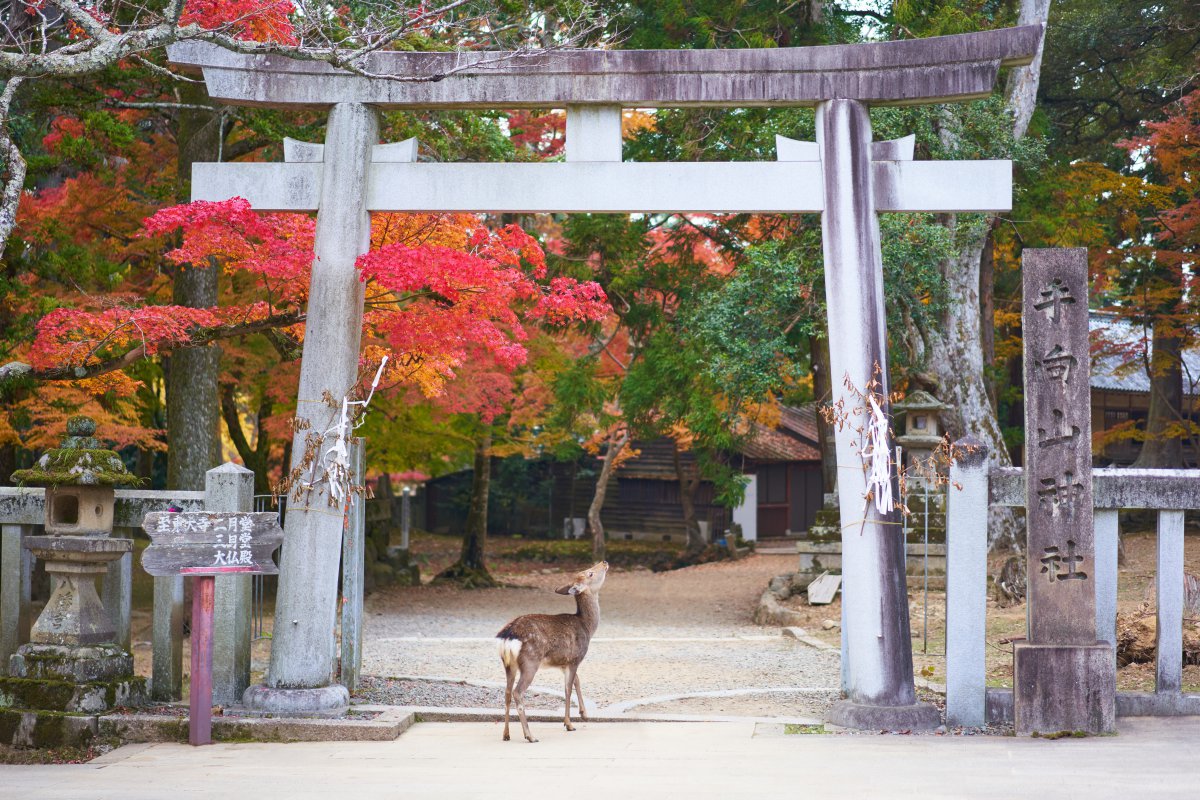
How to get to Nara Park
5 minute walk from Kintetsu Nara Station or about 20 minute walk from JR Nara Station.
Animals at shrines
At many shrines you can find statues of animals, or even living animals. In some cases, because of a local legend or other times, because the animals are just inhabiting the area. Another reason is because some animals are connected to the shrines or temples, like foxes who are considered to be the messengers to the inari deities. At most shrines you can spot lion or dragon-like statues, called komainu, at the entrance. Komainu are said to ward off bad spirits. Other animal figurines to be seen at shrines or temples include:
- Cows – There are multiple stories about the cow statues, some say you should rub the statue on the place where you have an injury, your injury will heal. Or it is said that rubbing the head of the cow statues at tenmangu shrines will grant you wisdom.
- White snakes – A white snake is considered a lucky animal
- Mouse – Mice will bring health, long life and happiness and are thought of as matchmakers.
- Doves – Doves are often seen at Hachiman Shrines where the god of war and protector of Japan and the Japanese people is enshrined. Doves are seen as the messengers of Hachiman.
In Japan, there are many shrines and temples where you can meet animals, either alive or in statues. Many Japanese believe certain animals bring luck, good fortune, business prosperity or a happy marriage. For this reason you can often find animal statues at most shrines at temples. When you visit the shrines and temples mentioned in this article, or any other, try to spot the animal statues!
Follow us on Instagram or Facebook for more travel inspiration. Or tag us to get featured!
Happy travelling!
